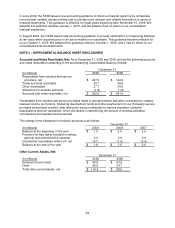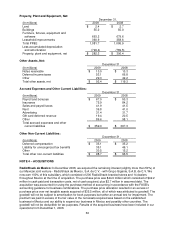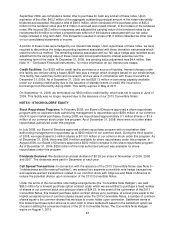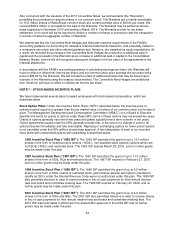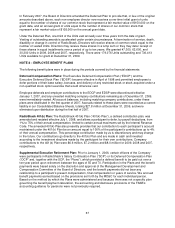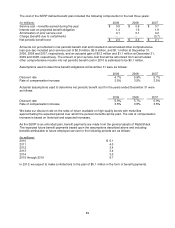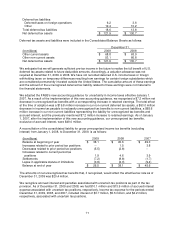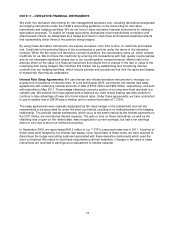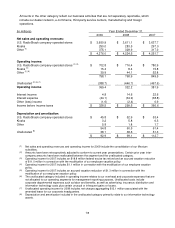Radio Shack 2009 Annual Report Download - page 75
Download and view the complete annual report
Please find page 75 of the 2009 Radio Shack annual report below. You can navigate through the pages in the report by either clicking on the pages listed below, or by using the keyword search tool below to find specific information within the annual report.
68
The Company adopted an unfunded Supplemental Executive Retirement Plan (“SERP”) effective January
1, 2006, for selected officers of the Company. Upon retirement at age 55 years or older, participants in
the SERP are eligible to receive, for ten years, an annual amount equal to a percentage of the average of
their five highest consecutive years of compensation (base salary and bonus), to be paid in 120 monthly
installments. The amount of the percentage increases by 2 ½% for each year of participation in the
SERP, up to a maximum of 50%.
To be a participant in the SERP, officers who were participants in the SCP or DCP had to withdraw from
the applicable plan and would then only receive benefits under the SERP. The benefits for these officers
are calculated under the SERP using a formula that calculates the benefit under each plan (SERP, SCP
or DCP) and pays the participant the highest dollar benefit.
If a SERP participant terminates employment due to retirement or disability between the ages of 55 and
70, the participant is entitled to their normal vested SERP benefit, paid in 120 equal monthly payments.
Based on the effective date of the SERP of January 1, 2006, fiscal year 2006 was the initial year in which
an actuarial valuation was performed. The projected benefit obligation at the beginning of 2006
represents the actuarial valuation that was performed as of January 1, 2006, based on the information
and assumptions developed at that time. Participants in the SERP as of January 1, 2006, were given
credit for prior service as an officer of the Company. Therefore, this service credit generated prior service
costs that are not required to be immediately recognized, but that are amortized for purposes of the net
periodic benefit cost calculation over the estimated average remaining service period for active employee
participants.
We use the last day of our fiscal year as the measurement date for determining SERP obligations and
conduct an actuarial valuation at that date. The change in benefit obligation, plan assets, and funded
status for 2009 and 2008 are as follows:
Year Ended
December 31,
(In millions) 2009 2008
Change in benefit obligation:
Benefit obligation at beginning of year $ 26.5 $ 30.7
Service cost – benefits earned during the year 0.5 0.6
Interest cost on projected benefit obligation 1.4 1.6
Actuarial loss (gain) 0.8 (1.1)
Benefits paid (5.2) (5.3)
Benefit obligation at end of year 24.0 26.5
Change in plan assets:
Fair value of plan assets at beginning of year -- --
Employer contribution 5.2 5.3
Benefits paid (5.2) (5.3)
Fair value of plan assets at end of year -- --
Underfunded status $ (24.0) $ (26.5)
The accumulated benefit obligation was $22.9 million and $25.7 million at December 31, 2009 and 2008,
respectively.
Amounts recognized as liabilities in the Consolidated Balance Sheets consist of:
December 31,
(In millions) 2009 2008
Accrued expenses and other current liabilities $ 5.0 $ 5.1
Other non-current liabilities 19.0 21.4
Net amount recognized $ 24.0 $ 26.5



